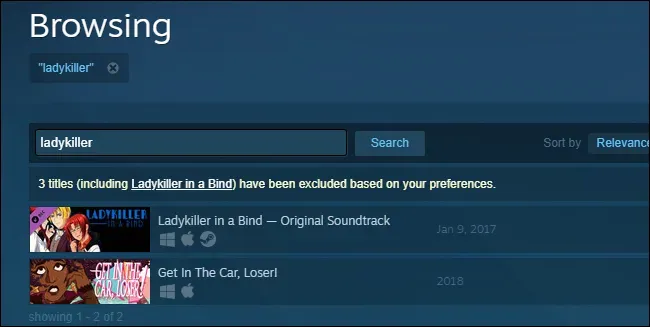The recent Steam adult content ban has sparked outrage among game developers and players alike, as Valve’s new guidelines seem to restrict various forms of expression in adult-themed games. This controversy unfolds against a backdrop of growing pressure from credit card companies demanding strict adherence to their standards, which has led to accusations of financial censorship in the gaming industry. As adult creators navigate Valve’s vague regulations, concerns arise about the implications for the LGBTQIA+ game developers who often push boundaries and explore intricate narratives. The Steam community has reacted strongly, with many expressing fears that this trend could stifle creativity and disproportionately affect marginalized voices within the gaming space. Ultimately, the question remains: will Valve prioritize artistic expression, or yield to corporate pressures that dictate what content should be deemed acceptable on their platform?
In the ever-evolving landscape of gaming, the recent changes to Steam’s content regulations signal a troubling shift towards tighter controls on adult gaming content. These newly imposed restrictions, allegedly designed to comply with the demands of financial entities and maintain a cleaner platform, are a contentious point within the community. As pressure mounts from credit card companies and related financial institutions, game developers—especially those from the LGBTQIA+ community—are left grappling with the ramifications of this censorship. Many are concerned that this newfound regulation may not only limit explicit content but could also discourage innovation and diversity in game storytelling. As criticism of Valve’s decision reverberates, the conversation about creative freedom versus corporate oversight has never been more critical.
Understanding Valve’s Vague Adult Content Guidelines
Valve’s recent introduction of vague guidelines surrounding adult content has stirred significant concern within the gaming community. Developers are left guessing what constitutes a violation of the new rules, especially as they relate to the expectations of credit card companies and other financial institutions. The lack of clarity surrounding these regulations might serve to inhibit creativity within the adult game genre, as developers must now tread carefully to avoid falling foul of nebulous standards that could change at any moment.
These guidelines appear to reflect a broader trend in the industry, where financial censorship is becoming a common theme. While Valve once prided itself on providing a platform that allowed diverse content to flourish, the company’s retreat into unclear regulations raises questions about their commitment to adult developers. The implications extend beyond mere inconvenience; they signal that financial institutions may now hold greater power over game content than the creators themselves.
The Impact of Steam’s Adult Content Ban on Game Developers
The potential banning of certain adult content from Steam is a wake-up call for developers who specialize in this niche. The recent shift reflects a growing trend where credit card companies and banks influence how companies like Valve operate, often prioritizing financial safety over artistic expression. This puts developers, especially those exploring LGBTQIA+ themes, in a precarious position of self-censorship to appease these powerful financial backers.
Moreover, it raises significant concerns about the future of adult games on platforms like Steam. Developers fear that financial censorship may lead to an unwarranted and sweeping removal of content that challenges traditional narratives or explores marginalized identities. This not only stifles creative freedom but could also lead to the erasure of important narratives within the LGBTQIA+ community. As gamers and developers alike navigate this evolving landscape, the ultimate question remains: how much influence should financial institutions wield over the diverse content available in gaming?
The Steam Community’s Response to the Guidelines
The Steam community has expressed a mixture of outrage and confusion in response to Valve’s newly vague guidelines regarding adult content. Many players and creators alike feel that the decision reflects corporate cowardice, as it seems to prioritize financial interests over fostering a safe and inclusive environment for all types of gaming content. This sentiment is further echoed by many in the LGBTQIA+ game development community, who’ve voiced concerns that their voices might be stifled under such vague constraints.
Community forums and social media platforms have become battlegrounds for discussion about the implications of this censorship. Many believe that censorship by credit card companies is setting a dangerous precedent, indicating that financial institutions could dictate not just what content is available, but who gets to share their story on platforms like Steam. The potential for financial repercussions has left developers wary, fearing they might unintentionally cross lines due to lack of clarity.
Exploring Financial Censorship in the Gaming Industry
Financial censorship has increasingly become a critical issue in the gaming industry, with platforms feeling the pressure from financial institutions to shape their content policies. As observed with Valve’s new guidelines, the influence of credit card companies can lead to a chilling effect on creativity, especially for those producing adult content. Companies may shy away from hosting games that could raise eyebrows among financial backers, leading to a more homogenized and conservative gaming landscape.
This trend raises important questions about the future of independent game developers, particularly those representing marginalized communities. Many in the LGBTQIA+ sector fear that existing financial censorship trends may lead to their content being unfairly targeted under the guise of corporate compliance. The unintended consequence could be a shrinking space for innovation and diversity in the gaming industry, as any hint of controversy may trigger a swift response from financial institutions.
The Future of LGBTQIA+ Content in Light of Financial Censorship
As financial censorship looms over platforms like Steam, the future of LGBTQIA+ content is particularly tenuous. Developers who create games that explore queer narratives may find themselves navigating an increasingly hostile environment, where even the most benign representation could be flagged as ‘explicit’ or ‘controversial.’ This societal scrutiny underscores the correlation between financial oversight and creative freedom, as institutions like Visa and Mastercard wield the power to influence content availability.
The alarm sounded by community advocates expresses a compelling concern that as content creators are forced to withdraw or alter their work due to vague guidelines, this will further marginalize voices that are already underrepresented in mainstream gaming. The fear is that the normalization of financial censorship will inadvertently lead to the erasure of LGBTQIA+ themes, depriving both developers and players of vital narratives and representation. Ensuring the safety and visibility of diverse voices in gaming is becoming ever more critical as the landscape shifts.
Valve’s Corporate Policies and Their Impact on Adult Content
Valve’s corporate policies regarding adult content are now under intense scrutiny, especially in light of the company’s latest shift towards vague prohibitions based on external financial pressures. This shift indicates a fundamental change in the relationship between Valve and its creators, who are now left questioning the security of their work on the platform. The line between acceptable and unacceptable content has become blurred, breeding confusion and uncertainly within the adult game development community.
Many are arguing that Valve’s actions could lead to a slippery slope where any content deemed unsuitable by payment processors might be forcibly removed or restricted. This potential for overreach means that not only adult content but also any creative endeavor that challenges social norms could fall prey to these regulations. As the community battles against these changes, it raises larger questions about the influence of financial institutions in dictating the cultural narratives allowed in gaming.
Community Concerns After Steam’s New Policies
The response from the community following Valve’s announcement of new policies concerning adult content has been one of skepticism and concern. Gamers and developers alike are worried that this vague censorship is just the beginning of a larger trend where financial entities dictate the type of content that can thrive on gaming platforms. With previous incidents of financial institutions swaying content availability on Patreon and OnlyFans, many fear a similar fate could befall Steam.
Various members of the community have voiced apprehension over the potential repercussions of these policies, particularly for LGBTQIA+ developers whose narratives may already deal with sensitive themes. The fear is palpable; if Valve aligns too closely with the interests of banks by scrubbing any content that could be interpreted as controversial, it compromises not just artistic freedom, but also inclusivity in gaming.
Corporate Censorship and Its Consequences in Gaming
Corporate censorship in the world of gaming is a complex and troubling issue, particularly as financial institutions increasingly influence which games can see the light of day. This trend suggests a growing power imbalance where the voices of creators can be easily silenced by the almighty dollar. Valve’s recent guidelines against certain adult-focused content are a clear reminder of how quickly corporate interests can overshadow artistic integrity, especially concerning complex themes like sex and identity.
As the industry grapples with these changes, it becomes evident that financial censorship can have a cascading effect, creating a culture of fear among developers who might hold back innovative ideas for fear of financial fallout. This leads to a homogenization of gaming content that stifles diversity and limits the exploration of vital narratives including LGBTQIA+ experiences. The industry’s future hinges on its ability to counteract such corporate censorship and advocate for inclusive storytelling.
Valve’s Response to the Community Backlash
In the wake of significant backlash from the community regarding its new guidelines, Valve has yet to provide a clear response or additional clarification. This silence is noteworthy, as many stakeholders within the gaming ecosystem are seeking assurance that they will not faced arbitrary censorship based on external financial pressures. The absence of communication from Valve only heightens the community’s concerns about how deeply financial institutions are influencing content availability on the platform.
Users and indie developers are calling on Valve to articulate its policy intentions more transparently. Without proper dialogue, trust between Valve and its developer community is eroding, which could lead to further disenfranchisement of creators who feel they cannot publish their work freely. As the situation unfolds, it remains essential that Valve takes steps to reassure all developers, particularly those in marginalized communities, that their voices will remain central to the platform.
Frequently Asked Questions
What is the Steam adult content ban and how does it relate to Valve guidelines on adult content?
The Steam adult content ban refers to Valve’s new vague guidelines that prohibit certain types of adult-only content on its platform. These guidelines are specifically designed to align with the rules and standards set by credit card companies and other financial institutions, which aim to prevent the publication of content deemed inappropriate or controversial.
How have credit card companies influenced the Steam community response regarding adult content?
Credit card companies have significantly influenced the Steam community response by applying pressure on Valve to remove or restrict adult content that may violate their guidelines. This has led to a cautious stance from Valve, resulting in the banning of certain adult games and creating confusion among developers regarding what content is acceptable.
Are LGBTQIA+ game developers affected by the Steam adult content ban?
Yes, many LGBTQIA+ game developers are concerned that the Steam adult content ban may disproportionately affect their content. With financial institutions acting as moral arbiters, there is fear that LGBTQ-themed games could face scrutiny and restrictions, limiting the diversity of games available on the platform.
What implications does the Steam adult content ban have on financial censorship in gaming?
The Steam adult content ban a raises concerns about financial censorship in gaming, where banks and payment processors dictate acceptable content. This trend could lead to a homogenized gaming culture, as developers might be discouraged from creating games that explore sensitive or controversial themes due to the fear of financial repercussions.
How has the Steam community reacted to the recent changes in Valve’s adult content policies?
The Steam community has expressed frustration and concern over the lack of clarity in Valve’s adult content policies. Many developers and players view the vague guidelines as a form of corporate cowardice, leading to increased anxiety about what content may be deemed unacceptable in the future.
What are the consequences of Valve’s adult content guidelines for game developers?
Consequences for game developers under Valve’s adult content guidelines include potential removal of games from the platform and a stifling of creativity. Developers may face challenges in publishing innovative content that could be perceived as crossing the line set by financial institutions.
Why is there worry about the Steam adult content ban leading to censorship of queer games?
There is significant worry that the Steam adult content ban could lead to censorship of queer games due to potential backlash from traditional financial institutions. As payment processors tend to scrutinize content that is categorized as ‘explicit’, many fear that nuanced or diverse LGBTQIA+ narratives could be suppressed under these new guidelines.
| Key Point | Details |
|---|---|
| Introduction of New Rules | Valve has implemented vague guidelines restricting adult content to comply with financial institutions. |
| Banned Content | Content may violate guidelines set by credit card companies and network providers. |
| Lack of Specificity | Valve provides minimal details, leaving developers uncertain about the boundaries of acceptable content. |
| Impact on LGBTQIA+ Content | Concerns over potential censorship of queer and LGBTQIA+ games due to financial pressure. |
| Corporate Response | Valve’s recent actions may reflect discomfort responding to financial institutions. |
| Industry Reaction | Concerns expressed by developers regarding the new censorship measures and their implications. |
Summary
The recent Steam adult content ban has raised significant concerns about the future of adult-only games on the platform. Valve’s vague new rules are designed to cater to the demands of credit card companies and internet service providers but do not clearly define what constitutes banned content. This ambiguity has left developers worried about the potential for censorship, particularly for LGBTQIA+ creators, as financial institutions increasingly influence the types of games that can be featured on Steam. The situation highlights a troubling trend of corporate influence over creative expression, raising critical questions about the impact of financial pressures on artistic freedom.



